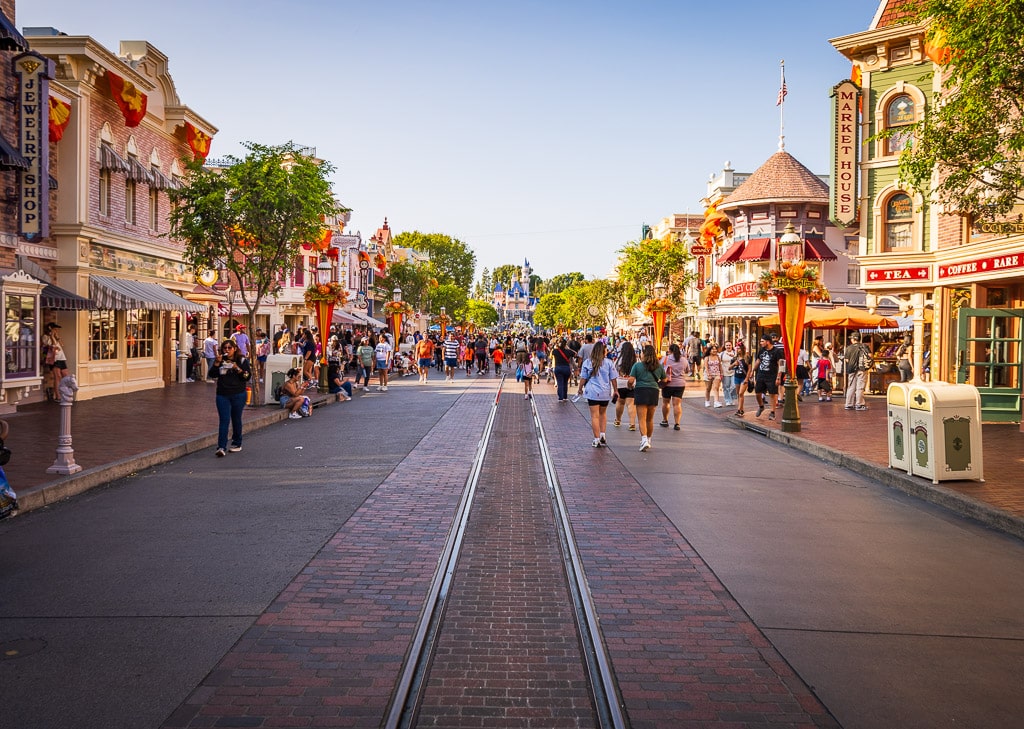India can be a fascinating destination to visit with kids. If you have travelled to only western countries before, it can also be overwhelming and intimidating to some extent. But with some research and preparation, a trip to India can be one of the best forms of education any parent will want their child to have. This trip will feel like a multi-country tour, on just one ticket. In less than a few hours of travel, the language, food, the way people dress, their practises, beliefs and even the way they look can change. To make the most of your trip, here are a few tips to help you plan your travel to India with kids.
Deciding the right age
India is a super diverse country, and you may have planned the trip for your child to experience its culture, food, landscape and history. But your kids should be old enough to understand or have an appreciation for it. Young children or infants might not like a massive change in their environment. They may get overwhelmed, cranky and even sick. It is easier for older children to entertain themselves in the long haul flight, have specific eating schedules and understand basic safety measures. If they don’t like anything, they can also communicate more precisely. Unless it is for other reasons, avoid travelling to India with infants and toddlers for tourism purposes.
What to pack
Your trip to India with kids would be a lot more comfortable if you pack right. Depending upon the age of your child, make sure to add the following to your packing list:
- Comfortable and loose cotton clothing
- Sunglasses and caps
- A collapsible lunch box
- Crocs/ clogs or sandals and sports shoes
- Swim gear
- Sunblock with at least 30 SPF
- Insect repellent spray
- Books, headphones and small toys, as well as on the go board games
If you are travelling with an infant or a toddler, make sure to carry the following in addition to the above list:
- Wet wipes and disinfecting wipes
- A plastic plate and bowl, disposable spoons, glasses and paper napkins
- Feeding bottles
- Diaper changing sheet
- Infant formula
- A thermos that could keep water hot for 12 hours
- Packaged baby foods, finger foods (make sure to keep them away from direct heat and sunlight)
- Car seats are not mandatory for kids in India, and they are also not available with most car rental companies. Carry a lightweight car seat or a booster if you have a young child.
- Avoid bringing heavy or large strollers to the county. The roads are not stroller friendly and, this will add bulk to your baggage. Consider an umbrella stroller instead. A baby carrier or a sling is the best option for infants.
Health and hygiene
The health of your kids must be on the top of the priority list when you consider travelling anywhere. Make sure their vaccines are up to date. You can check vaccines required for your kids required to travel to India here- website: wwwnc.cdc.gov/travel/destinations/traveler/none/india
Take a medical and first aid kit for your children from your home country and make sure it includes rehydration drinks, fever reducer and probiotic medicines. A mosquito or a bug repellent and an ointment for heat or allergic rash must also be in the kit. Do not forget to carry their prescription medicines.
In case your child gets sick, do not panic. There are good and competitive paediatricians or even general physicians in almost every place you will visit. You can walk in without an appointment at most clinics and hospitals. Health care is cheap, and so are medicines.
Clean public toilets are hard to find in India. When your child needs to use one, you may ask a restaurant/hotel. Toilet paper is not generally found in most public washrooms, so take your own and keep them handy. You can use a toilet seat disinfecting spray such as Peesafe before using the washroom.
Encourage your children to wash or sanitize their hands frequently especially, before meals and after using public restrooms due to exposure to bacteria and pollution.
ADVERTISEMENT
CONTINUE READING BELOW
Select the right kind of accommodation
When you are travelling to India with children it is best to stick to good hotels. Avoid booking cheap or budget hotels. India does luxury hotels extremely well. You can pick from medium luxury international hotel chains such as Hilton, Hyatt, Marriott or similar or high-end luxury chains like Taj and Oberoi. The hotel will serve as a sanctuary for tired kids when they get worn out from the traffic, chaos and the crowds. Many good hotels in India are equipped with swimming pools, games rooms and even children’s clubs. They serve international cuisine and usually have more than one restaurant.
The rooms in India often come with a large king-size bed. If you have one young child, they can share the bed with parents or, you can pay for an extra bed inside the room itself. With two kids, you may want to rent a separate room for the children and request an interconnected room if they have these available.
Find options on booking.com or start your search using the map below.
Where to eat/ drink
With an array of street food options in the country, you might be tempted to make your kids sample everything. But inexperienced tummies may not able able to handle it well. Food and water are the two major contributors to the infamous Delhi Belly. Remember the following points for eating street food with kids in India.
- Eat only at busy stalls. As a rule of thumb, the more crowded the place, the fresher the food!
- Only eat on a disposable plate and with disposable spoons. Use paper glasses if possible
- Avoid drinking any street beverages like lemonade or milk products
- Customize the food to be less spicey because Indians can go crazy with chillies and spices
- Do not eat pre-cut fruits or vegetables from a hawker
- Avoid eating non-veg at roadside restaurants and as street food.
Restaurants
Most tourist cities in India have very good restaurants that serve all kinds of meals. If your child feels comfortable with tried and tested flavours, there is always an option of international fast food joints such as McDonald’s, Pizza Hut and Dominos. India is a predominantly vegetarian country. Panner Masala, Nan bread, Lentils (daal) are a few vegetarian options that can make your child happy. South Indian vegetarian dishes like Dosa and Idli are easy on spices and the tummy of the kids.
However, if your child wants to eat non-veg make sure to check ratings of the restaurant on Zomato, TripAdvisor or Google.
It is best to book breakfast in your hotel itself where possible. Hotels will usually have a spread of local and international foods. Make your child eats a hearty breakfast. If you have a collapsible tiffin, the hotel staff often won’t mind if you pack a fruit like an apple or banana, some muffins or doughnuts or even a cold sandwich or a wrap that might come in handy during travel or sightseeing. You just have to ask for it politely and mention it is for the kid.
Water and drinks
The tap water in India is non-potable. It must not be used as drinking water. Use mineral water bottles from companies like Kinley, Bisleri, Bailey or Aquafina. Avoid local companies of bottled water, sometimes it is just filtered water and not up to the standard. You can carry small juice boxes from Real or Tropicana that are available almost at any convenience store in the country to keep kids hydrated. Alternatively, there are small tetra packs of flavoured milk, which might come in handy in between meals.
Safety
As opposed to the common perception, India is not any more unsafe to travel with kids as most western countries. You generally have to be vigilant and cautious, and avoid troubled places and situations, as with other countries you had previously travelled. The rules are the same.
Due to some cultural differences there are few things to remember though. It is not unusual that western people get a lot of harmless attention in India. An occasional request for a selfie or a curious stare is not considered rude in the country. But when it comes to children, they may get twice the attention as you. People are more friendly and enthusiastic with kids in general and start considering them one of their own. They might want to touch their cheeks, pat their back or stroke their hair. It may be invasive for you and irritating for kids. It is okay to say a firm no for any of it, no matter how well-intentioned it is.
ADVERTISEMENT
CONTINUE READING BELOW
Choose the right mode of transport
Avoid public transport as much as possible for local commutes when travelling with kids in India. It can be extremely crowded. For travelling within the city you can hire a cab with a driver from Uber or Ola app. You can also keep the taxi and the driver with you for the number of days you plan to stay. It is not expensive compared to a western country. The cab and a dedicated driver can come in handy to suggest and take you to restaurants and places your children will like. Seat belts are compulsory in India in most places but only for front-seat passengers. Nevertheless, ask your kid to buckle up in the rear seat. Also, make sure you ask your driver to drive slow and safe.
If you want your children to experience Indian trains, then only book First or a Second A/C coach. They are less crowded and cleaner. Avoid travelling on a bus, opt for an intercity cab instead. Make sure your cab is air-conditioned. You may keep the windows of the cab closed to avoid pollution and the honking noises that may irritate your child.


Plan child-friendly experiences
Draft an itinerary that gives your child a variety of experiences. Do not make them visit one monument after another. This can get boring for children. The Golden Triangle is the most popular region for tourism in India. If you do not want to state hop, you can pick the state of Rajasthan and visit Jaipur, Udaipur and Jaisalmer. Stay in a fort and a palace, spend a night at the dunes, and your kids are sure to remember the trip for their lifetime. If you want to visit Mumbai and around, you can combine Ajanta and Ellora caves and Goa with it. Citylife, history and beaches it is perfect for kids! The state of Kerala with its forests, backwaters, beaches and tea estates, will be fun if you want to experience South India. Make sure you plan to stay in a houseboat, it is out of a box experience.
If you have older kids, you can even consider doing a guided trekking trip in the states of Himachal and Uttarakhand. For some otherworldly landscapes, visit Leh and Ladakh in North India. This particular trip is advised only for older kids because it involves travelling with a lot of elevation changes. This trip is slightly difficult, but the views are every bit worth your effort. All these places are unique and have a different levels of challenges. Pick wisely according to the age and inclination of your child. Even in challenges, make them understand the resilience that the local population encounter every day.
Tour Ideas
See more tours and activities
Summary
India will be an eye-opening experience for your children. A country of more than 1 billion population of all caste, creed, colour and culture will break a stereotypical mindset of your child. This trip will give them a different perspective of the world. You will also see how your kids adapt and evolve according to the situation quicker than expected.
For other helpful tips in India, read Top Things to Know When Visiting India (Helpful Tips).
Book India
Author
For Shalbha travelling and writing about travel experiences is something that feeds her heart and soul. A mother of two, working for an IT company, writing is her passion and now turned into a profession. In the four years of her travel writing journey, she documented her experiences on websites, newspapers, inflight magazines and conducted live sessions.
Follow her on
tripoto.com/profile/shalbhasarda
and Instagram at @shalbhasarda
to see more. [Read full bio]
If you would like to write a guest article so as to raise your profile then please get in touch
Noticed a mistake? Let us know.







